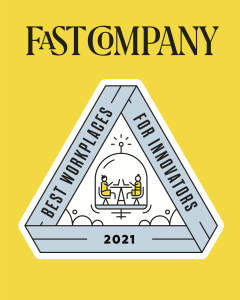Final Fantasy 3 Thief Front Line or Back
It's not easy being a frontline customer-service agent these days. Consumers have all kinds of questions about products, services, deliveries, promotions and more—and they expect to have them answered quickly, seamlessly, and accurately.
While providing a great customer experience is the ultimate goal in every interaction, it's not always as straightforward as it seems. Such was the case for some employees at TELUS International, an organization that designs, builds, and delivers digital solutions to enhance the customer experience of global brands. While supporting a U.S.-based delivery-services client, team members kept encountering roadblocks. The problem? The client's existing knowledge base—the system for storing and retrieving information— was clunky and difficult to navigate.

Instead of making do, TELUS International employees took a proactive approach to address the issue, developing an AI-powered chatbot called Agent Assist to help them more easily access information from the client to answer customers' inquiries. Agent Assist is just one example of how TELUS International relies on input from its frontline employees to drive innovation—and one reason the company has earned a place on Fast Company's list of the Best Workplaces for Innovators. "We believe our frontline team members are the heroes of this organization," says Marilyn Tyfting, the company's chief corporate officer.
A HANDS-ON APPROACH
TELUS International uses several strategies to capture innovative ideas from frontline employees across the organization. For example, as part of monthly and quarterly reviews, team members submit ideas for improving or automating services. Employees can also leverage an internal platform to share ideas, contribute to the development process, and provide feedback to continuously refine them.
What's more, TELUS International believes that education and training are crucial to innovation. Initiatives such as its Digital Fitness Program, which ensures that all employees have a baseline understanding of Next Gen technologies, and an internal course library, which keeps employees' skills and knowledge up to date, are key parts of the brand's learning and development strategies.
But sometimes the best ideas—like Agent Assist—simply come from trying to overcome day-to-day challenges. "Because we've invested in this programmatic approach to transformation and creating a culture of continuous improvement, digital awareness, and automation, innovation has now become a recurring occurrence," Tyfting says. "It's what team members are thinking about and doing every day."
WHERE CULTURE AND INNOVATION MEET
Once the chatbot went live, the team conducted a formal study: Did it improve interactions with customers? If so, how much? The answer was a resounding yes. The chatbot produced an annual cost savings of $375,000, while reducing the average search time from 120 seconds to 13 seconds. Accuracy and, most importantly, customers' satisfaction also improved. "It's not about efficiency to save dollars—that's a by-product," Tyfting says.
"It's about a better customer experience for the end user. And it's about enabling our team members to be most productive in a way that's less frustrating for them."
While external recognition is always appreciated, it's the "best workplace" message that is conveyed by the award that makes this particularly meaningful, Tyfting concludes. "It's about celebrating the best workplace for our team members," she says. "And for us, that's always been at the intersection of culture, innovation, and technology."
Final Fantasy 3 Thief Front Line or Back
Source: https://www.fastcompany.com/90666238/finding-inspiration-on-the-front-lines